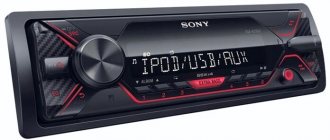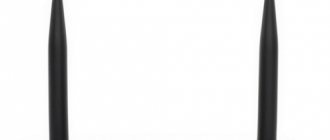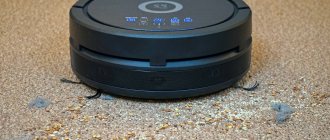| Place | Name | Characteristics in the rating |
| The best universal telescopes for beginners: budget up to 20,000 rubles. |
| 1 | Celestron AstroMaster 90 AZ | The most versatile model |
| 2 | LEVENHUK Strike 90 PLUS | The best telescope for beginners to observe the Moon and planets of the solar system |
| 3 | Veber 400/80 AZ | Low cost and balanced parameters |
| The best telescopes for observing deep space |
| 1 | Veber 800/203 EQ | Optimal combination of price and functionality |
| 2 | Sky-Watcher Dob 8″ (200/1200) | Buyers' choice |
| 3 | Meade LightBridge 12″ f/5 Truss-Tube Dobsonian | Best Features |
| The best auto-aiming telescopes |
| 1 | Celestron NexStar 8 SE | Better pointing accuracy |
| 2 | Sky-Watcher Dob 8″ (200/1200) Retractable SynScan GOTO | Convenient transportation |
| 3 | Bresser National Geographic 70/350 | German quality and affordable price |
| The best telescopes for children and teenagers |
| 1 | BRESSER Junior Space Explorer 45/600 AZ | The most convenient height adjustment |
| 2 | Telescope Veber UMKA 76/300 | Best price |
| 3 | Meade Infinity 50mm | Maximum functionality for a minimum of money |
| The Best Portable Telescopes for Travelers |
| 1 | Celestron Travel Scope 70 | The easiest |
| 2 | Sky-Watcher BK Mak90EQ1 | Lots of options at an affordable price |
| 3 | LEVENHUK Skyline Travel 70 | Compact model with automatic guidance |
The first person to think of using a telescope that already existed by that time to observe celestial bodies was Galileo. The magnification that his optical device produced was only threefold, but this was enough to trigger rapid technical progress: within six months the scientist achieved an eightfold magnification, and a little later - 32x.
The main thing to consider when buying: a good telescope is one that is used frequently. Much depends on the observer himself, and mastery, as we know, comes with experience. Before purchasing, you should decide on the purpose of the device, its design (stationary or portable), type of mount, and type of guidance.
How to choose the right telescope
The best universal telescopes for beginners: budget up to 20,000 rubles.
Devices from this category have relatively universal characteristics, which allows them to be used both for observing the planets of the solar system and for studying deep-sky objects. The diameter of the lens in the telescopes we selected does not exceed 90 mm, which is why it will not be possible to see objects that are too dim, but there will be less flare, which means that the device can be used even within the city. It is also worth noting that beginners are unlikely to want to spend large sums on their first amateur device, so we will limit the budget to twenty thousand rubles.
How to choose the right telescope and save money?
Like many other situations, everything happens for the first time. A number of questions arise that novice astronomers face - how to choose that treasured telescope from all the variety offered by stores and companies? There are many factors and criteria that need to be taken into account: your skills, the area and nature of the device’s use, and, of course, last but not least - its price.
But it’s still worth starting by answering the main question: “What is a telescope?” Centuries later, it is still structurally a tube, at one end of which there is a lens (this can be either a light-collecting lens or a concave mirror; and sometimes a combination), at the other end there is an eyepiece. It is through it that we view the resulting image.
What criteria should be taken into account?
1) Telescope type:
Depending on the type of observation object, telescopes are divided into 3 types:
Refractors (lens). Whether you are a beginner or an amateur astronomer, or have no skills at all, this type of telescope is exactly what you need. They allow you to clearly view terrestrial objects and celestial bodies within our solar system.
Reflectors (mirror) - For more advanced observers. Ideal for deep space and high-quality images of distant galaxies.
Catadioptrics (mirror lens). Takes into account the advantages of the two previous types. Suitable for both observing distant and nearby astronomical objects. Allows you not only to observe the stars, but also to take high-quality pictures.
2) Aperture (lens diameter):
One of the most important criteria for choosing a telescope is the aperture of its lens. It determines the ability of a lens (or mirror) to collect light. The characteristic establishes a direct relationship between the number of reflected rays entering the lens and image quality. At high rates, the telescope allows you to detect weak reflected radiation from distant space objects.
Recommended aperture (lens diameter):
70-90 mm - to obtain a clear picture of nearby planets or satellites in city conditions;
150 mm - to obtain a clear picture of nearby planets or satellites in “camping conditions”;
Over 200 mm – allows you to see distant galaxies;
Up to 400 mm - semi-professional lenses. Suitable for places remote from the city with a dimly lit night sky.
3) Focal length:
Focal length is the distance from the lens to the point in the eyepiece where all the light rays are collected again into a beam. Affects the degree of magnification and quality of the visible image. The higher the indicator, the better the object is visible.
Structurally, the focus increases the length of the telescope itself, which affects the convenience of its storage and transportation. For storage on the balcony, it is more convenient to keep a short-focus device (F does not exceed 500-800 mm). This limitation does not apply only to catadioptrics - in them the light flux is refracted many times, and does not go in a straight line, which makes it possible to significantly shorten the body.
4) Magnification factor:
It is calculated by dividing the focal length by the same characteristic of the eyepiece. If the telescope's focus is 800 mm, and the eyepiece has 16, then the optics will give a 50x zoom. Interchangeable eyepieces allow you to adjust the magnification of objects. TODAY, manufacturers offer optics with a focus from 4 to 40 mm, as well as Barlow lenses that double the focus of the telescope itself.
The indicator is important for studying nearby cosmic bodies (such as the Moon), since it is not so important for observing distant galaxies.
5) Mount type:
The mount is a stand for a telescope (reminiscent of a surveying tripod or tripod).
It is divided into 3 main types of special movable supports:
Azimuthal is the simplest stand that allows you to move the telescope horizontally and vertically. Most often it is equipped with refractors and small catadioptrics. But for astrophotography, an azimuth mount is not suitable because it does not allow you to capture a clear picture.
Equatorial – has impressive weight and dimensions, but it helps to find the necessary object at given coordinates. This tripod is ideal for reflectors that are designed for deep space objects that are indistinguishable to the naked eye. It is also popular among astrophotography fans.
The Dobsonian system is a compromise between an easy to use and cheap azimuth stand and a reliable equatorial design. Often comes complete with powerful and expensive reflectors.
6) Price:
- A refracting telescope on an azimuthal mount can be purchased at a price from 3,500 to 25,000 rubles. The cost will depend on the technical characteristics of the optics and the functionality of the device.
- A reflector (mirror) telescope on an equatorial stand will cost you from 14 to 55 thousand rubles.
- For a professional and powerful catadioptric device you will have to pay 18-95 thousand.
- The price of a simple children's telescope starts from 1000 rubles and can reach quite an “adult” 25 thousand.
The cost of telescopes with astrophotography capabilities starts from 10 thousand rubles and reaches 3 million.
I still don't understand how to choose.
If you need universal advice without separate criteria, then the main categories are highlighted below, taking into account the buyer’s lifestyle and the degree of his interest in astrology and observing “celestial bodies” as a hobby.
For a schoolchild aged 8-10 years, you can purchase an inexpensive and easy-to-use refractor telescope from a special children's series with an aperture of 70 mm on an azimuthal mount. An additional adapter for the camera will allow it to take beautiful pictures of the Moon and ground objects. (Example)
For novice researchers of the night sky, it makes sense to take a closer look at a lens telescope with an objective lens diameter of 60-70 millimeters.
If you think that you will spend a lot of time on the hobby, it is better to purchase a Dobsonian telescope with an 8-10 inch lens. This is an inexpensive, portable reflecting telescope with a large aperture, a simple uncontrolled altazimuth setup, and a very user-friendly design. (Example)
For observations within the city, it is better to buy a short-focus refractor with an aperture of 70-90 mm on an azimuthal stand.
For travelers or those who plan to frequently transport their telescope, a lightweight and reliable mirror-lens unit equipped with a Dobson system or an alt-azimuth mount is necessary. You can also choose an inexpensive 4-inch reflex telescope. For cheaper analogues, the best option would be a Schmidt-Cassegrain telescope with a 6-8 inch lens. (Example) Both of these telescopes are very compact and well suited for travel.
If your dream is to study distant galaxies and nebulae, purchase a reflector with a lens diameter of 250 mm or more, equipped with an azimuthal stand. For observing deep space objects, the size of the lens is extremely important, and the price of a telescope with an 8-inch lens is an order of magnitude higher than the price of a telescope with a mirror reflector of the same size.
Experienced astrophotographers cannot do without a catadioptric telescope with a maximum aperture (400 mm) and a long focus of 1000 mm. It is better to choose an equatorial mount with an automatic drive.
For experienced amateur astronomers who already have an understanding of astronomy and want to devote all their free time to their hobby, we recommend the Schmidt-Cassegrain telescope. Just like the Dobsonian telescope, this device is very compact, which is very important for amateur use.
Or maybe I should immediately buy something more expensive and more serious?
Understanding your hobbies is possible only through the process. It is quite possible that after purchasing an inexpensive telescope, you will fall in love with astronomy, and then you will need a more professional and larger telescope.
“Did I waste my money on my first telescope?” Of course, there is some truth in this. Although, if in the future you buy another telescope, then the old one can also be useful to you: you can give it to your child or brother, you can use it as a viewfinder, or, finally, sell it and reimburse part of the costs. But, usually, only people who have lost interest in astronomy sell their telescopes.
Amateur astronomy is a fascinating activity, it will give you a lot of new and interesting information that will make hours seem like minutes.
Find a telescope in 3 minutes
The best telescopes for observing deep space
Over time, novice astronomers become “crowded” within the solar system. All visible planets have already been studied far and wide, but we still want something new. In this situation, it will help to purchase a special telescope designed for observing distant galaxies, nebulae, star clusters and other deep-sky objects. For this purpose, reflectors with a diameter of over 200 mm are used. A large aperture collects more light, which means that for observations it is better to go outside the city, where there will be no artificial sources that create flare. It is also worth considering that the increased diagonal of the lens requires an increase in the dimensions of the device, and this directly affects the weight, transportability and cost.
Criterias of choice
Lens diameter. An accurate picture of objects located close to each other can be obtained with a lens whose diameter does not exceed 150 mm. If this figure is higher, the image will, of course, become better, but the cost of such models is much higher.
Focal length. It affects the degree of image magnification and its quality. The longer the focal length, the clearer the picture will be. Experts recommend considering options where this figure reaches 500-800 mm.
Mount type . There is an equatorial and an azimuth mount. Here you need to take into account your own preferences and the situation in the place where the telescope will be located.
The Best Portable Telescopes for Travelers
The optical tube of a telescope, especially with a larger lens, is a rather complex system of lenses and mirrors, so it cannot be miniature. The mount and tripod contribute to the dimensions and weight of the device. But it’s especially good to observe celestial bodies where there are no big city lights and dust in the air - in an open field, in the mountains or at sea. For those who like to travel, special, lightweight models of telescopes are produced, the design of which uses a lot of know-how, making it possible to conveniently and safely transport the device to the observation site.
Mirror-lens
Let's start the review with catadioptric, or mirror-lens, telescopes. Their design uses lenses to correct and improve image clarity. The top 3 selected the best telescopes for 2021 for observing cosmic bodies.
Sky-Watcher BK MAK90EQ1
pros
- magnification up to 180 times
- red dot finder
- select settings
- compact
- 2 Super eyepieces (63x, 125x)
Minuses
- unclear image at high magnification
This is one of the best short lens home telescopes available today. The Maksutov-Cassegrain system with full multilayer coating of optics gives an image of excellent quality, but only at a magnification of up to 100x, then blurring appears.
Meade ETX-125 AT f/15
pros
- magnification 21x-250x
- azimuth or equatorial mount
- automatic guidance
- remote control
- Suitable for mounting photo lens
Minuses
- no pole finder
- need to get used to the reflected image
A semi-professional reflecting telescope is suitable for observing distant planets of the solar system. It has a built-in auto-tracking system and allows you to quickly switch to photography (you need to buy a T-ring to install a photo lens). But for perfect deep space tracking, it is not in the class.
Celestron NexStar 4 SE
pros
- auto-guidance
- no light loss
- search for objects in the database
- remote control
- diagonal lens 900
Minuses
- azimuth mount only
- 1 eyepiece
With this telescope, you don’t need to look for the right star in the sky, because you can select it from a list of 40 thousand, and the lens itself will find it and adjust its clarity. Remote control allows you to immediately print out sky maps. But there is only one 25 mm eyepiece and there is no equatorial mount.
Tips for choosing the best telescope for kids.
Telescopes are one of the most accessible ways for children to explore the starry sky and ground objects.
With the help of a children's telescope, they can study objects such as the Moon, planets and stars, or observe nature. And if you want to do this with your child, then this will also be a fun activity for you. There are a dizzying array of telescopes for kids, and the price differences between them are staggering. We think you have already read more than one article on this matter, well, since you came to our page, we will help you with this. So, if you want to inspire your little explorer, this article will tell you how to choose the best telescope for your young explorer.
The best auto-aiming telescopes
Telescopes with automatic guidance make it possible to simplify the search for celestial bodies by reducing human participation to specifying the desired object in the database supplied with the device. Basic computer skills and ability to use software required.
Celestron Advanced VX 8″ EdgeHD
Rating: 4.9
The Advanced VX 8″ EdgeHD telescope is designed using innovative technologies and provides “astrographic” image quality. EdgeHD optics allows you to observe an excellent image of the starry sky without curvature at the extreme viewing points. The optical tube is compatible with the photography system, and is equipped with ventilation slots with mesh filters. The mirror clamps perfectly fix the image during any movement of the pipe. Unique Celestron StarBright XLT optical coating is used.
The computerized mount is the latest development that expands the telescope's control capabilities. Smooth movement is ensured by powerful motors on both axes, and precise adjustment is ensured by optical rotation angle sensors. Ports are provided for connecting additional devices and astrophotography. The control panel keys are backlit.
Advantages
- large lens size;
- control from a computer.
Flaws
- There is no provision for stopping automatic guidance.
Sky-Watcher Dob 8″ (200/1200) Retractable SynScan GOTO
Rating: 4.8
The reflex mechanism of the Sky-Watcher Dob 8″ (200/1200) Retractable SynScan GOTO makes the telescope an effective device for studying distant objects in outer space. Thanks to the large-diameter parabolic mirror, you can easily study nebulae, stars, as well as asteroids and comets. The brightest and clearest image can be observed over the city. A Crayford focuser is used for adjustments. To increase your view and thoroughly study the object, the package includes an adapter for attaching additional 10mm and 25mm eyepieces.
For convenient transportation, the optical tube can be folded, and it becomes 1.5 times smaller than its original size. A Dobson mount allows you to operate the model without using a tripod or tripod. In addition to manual control of the pipe movement, motor drives are provided. The auto-targeting system is capable of finding the desired celestial body among 42,000 objects and will keep it in the observer’s field of view without his participation.
Advantages
- two eyepieces with adapter;
- mount with motor drives;
- parabolic mirror;
- large lens size;
Flaws
- not detected.
LEVENHUK SkyMatic 135 GTA
Rating: 4.7
Experienced astronomers recommend the SkyMatic 135 GTA reflector model as a good gift for children. The optical qualities of the device make it possible to study in detail the Earth's satellite and nearby planets. The telescope is equipped with a lens with a maximum diameter of 130 mm, which allows it to be used in an urban environment. The set contains interchangeable eyepieces that magnify the image by 65 and 26 times. The adapter allows you to install other eyepieces not included in the kit. Ease of use, accessible even to a beginner, is ensured by the auto-guidance system. The controller database contains the coordinates of 42,000 celestial bodies.
The telescope is equipped with a cable to connect to a PC to control it using software. Suitable for astrophotography. The light weight of the structure makes it easy for even a schoolchild to move the model to a new observation point.
Advantages
- little weight;
- possibility of astrophotography;
- excellent lens size;
Flaws
- slight play in the focuser.











